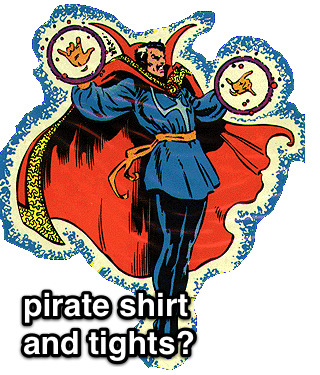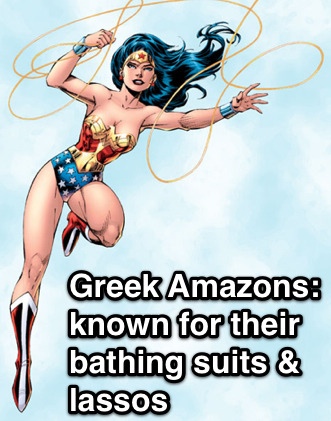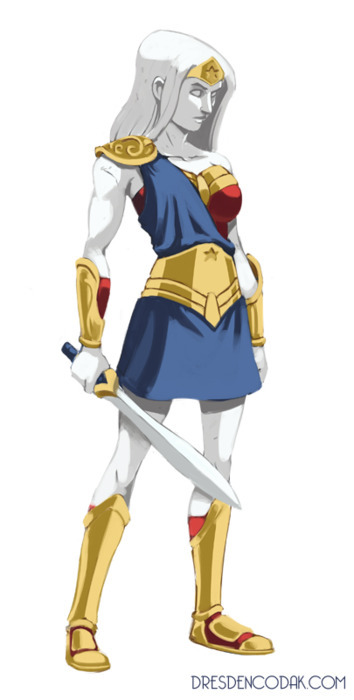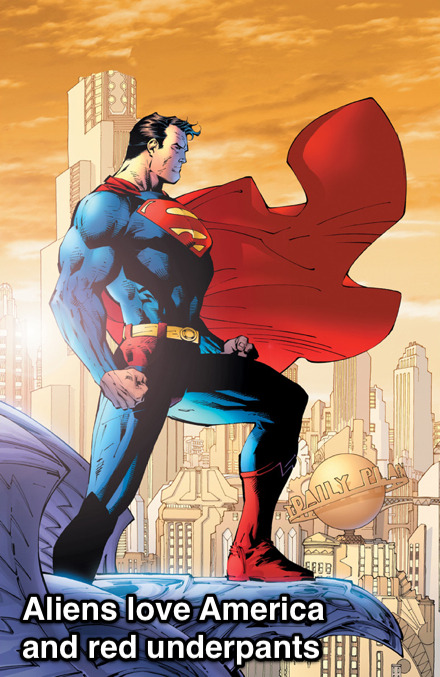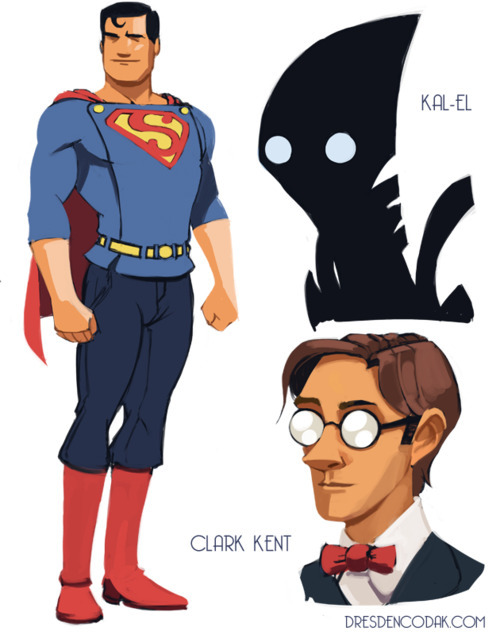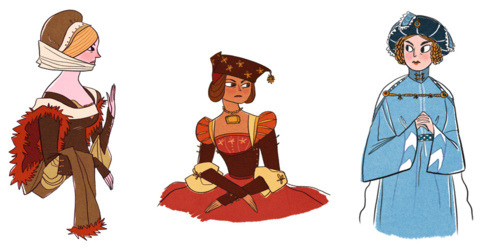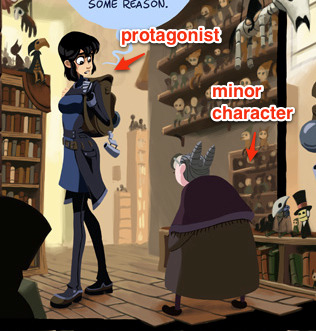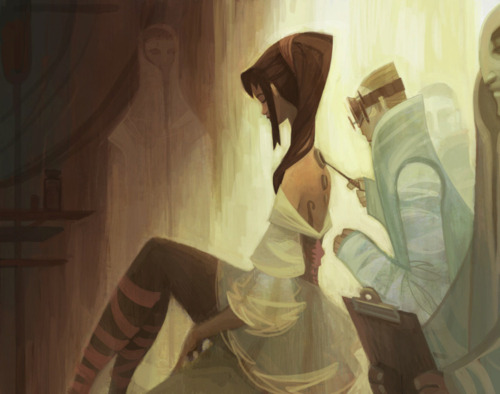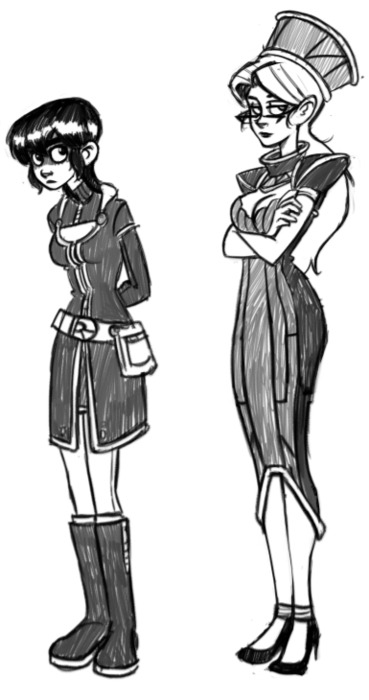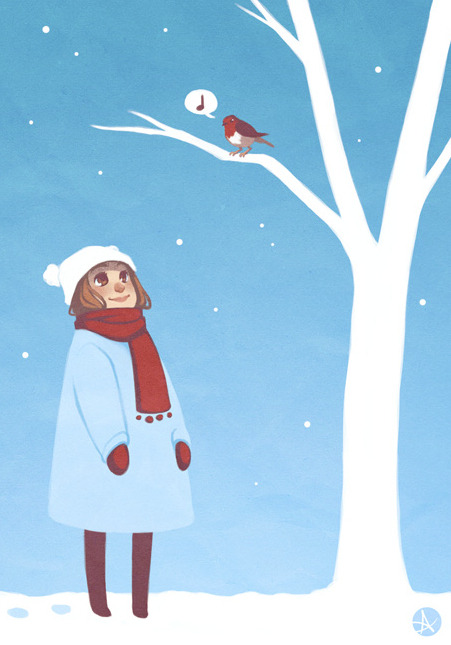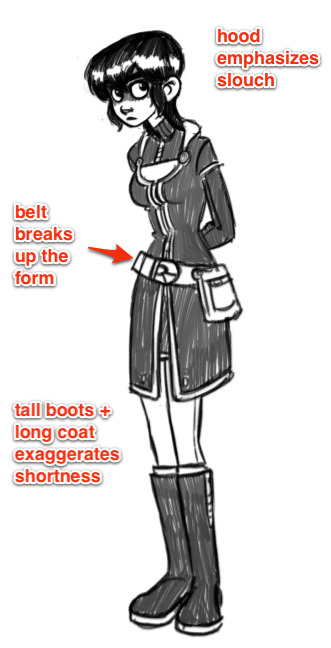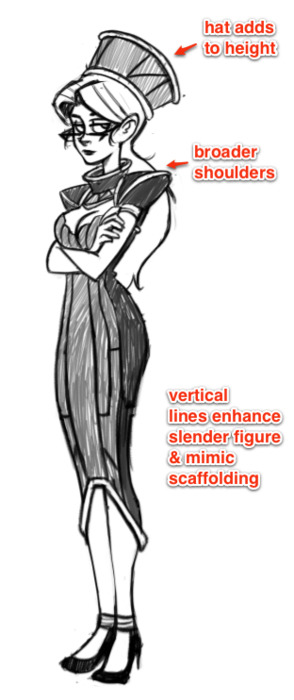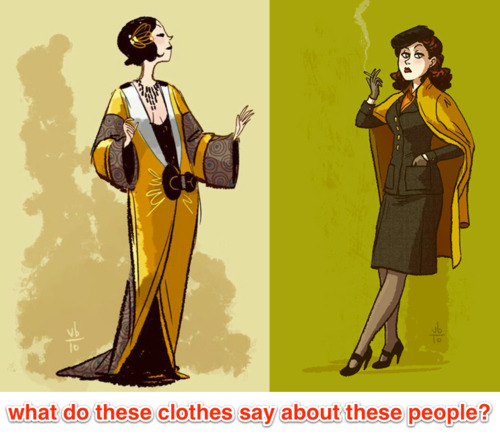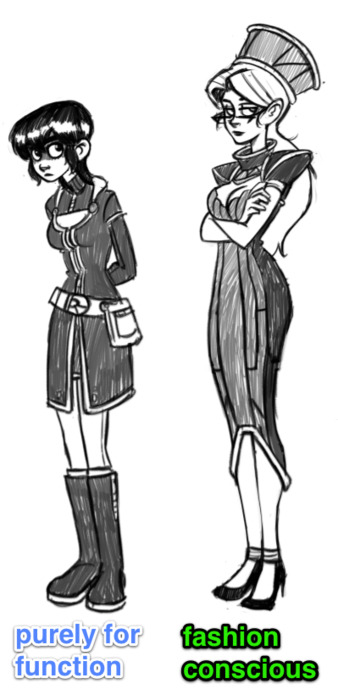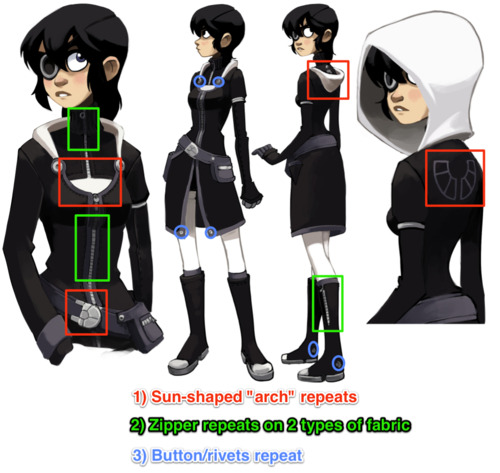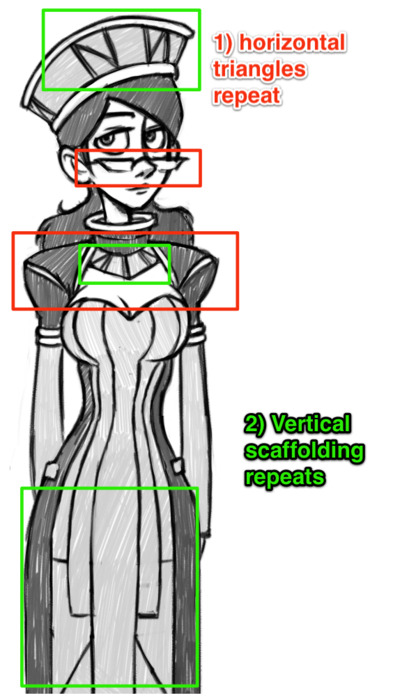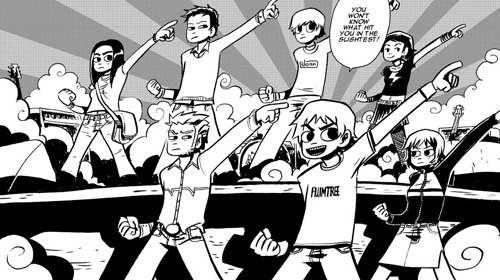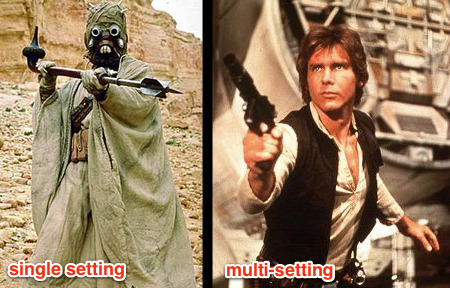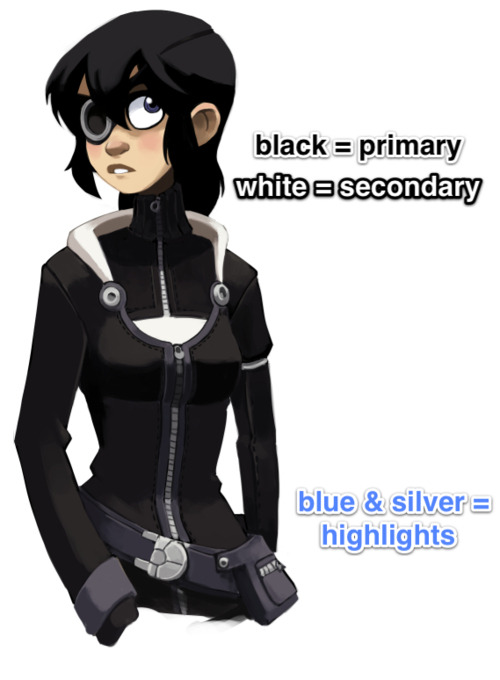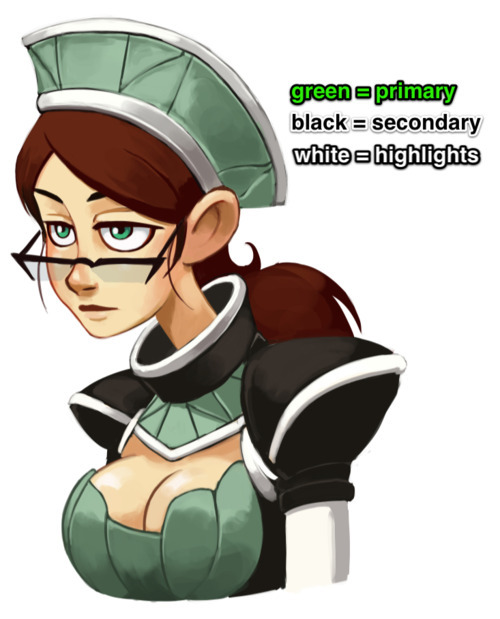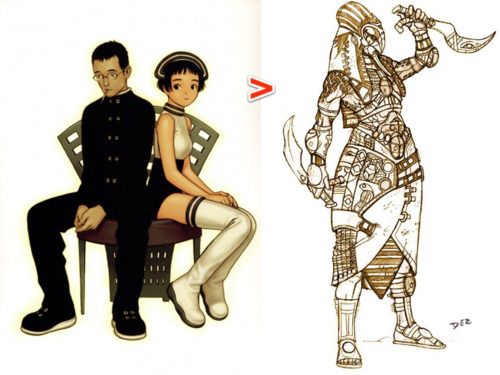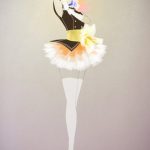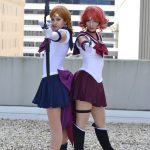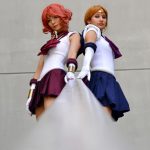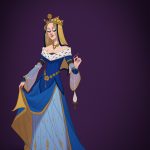Rad How-To: Shirt Collars
Tag: costume design
5 Essential Superhero Redesigns!
Seeing as how I’ve done both the top ten for best and worst superhero costume redesigns, I feel obligated to put my money where my artistic mouth is and take a stab at fixing or updating some of these costumes. I’ll be taking a similar approach to my earlier take on Batman & Robin, where both the back story and design of each character are fair game. I’ve done five here, and chose them based on one of two criteria:
- It’s a particularly awful outfit that doesn’t fit the character, or
- It’s a solid character who just needs some updating or tweaking
I’ll list these in order of “reboot depth:”
5. Starfire
What’s wrong: In the wake of DC’s “new 52” this felt like a no-brainer. Starfire is a decent character who’s always, in my opinion, gotten the short end of the costume stick. I get that she’s supposed to be sexually liberated and somewhat polyamorous, and that’s fine, but dressing like a John Carter’s Princess of Mars-themed stripper doesn’t cut it. Really, up until the Teen Titans cartoon she’s always been in the most awkward and impractical getups for someone fighting crime.
The Fix: I went for the simple route and took some notes from the cartoon (notably the skirt). I wanted to make sure it kept the bubbly, innocent feeling of the character while also hinting at some power (with the exposed arms here). The overall effect is meant to convey someone who’s tough, cheerful and comfortable flying around in the air.
4. Dr. Strange
What’s wrong: I love Dr. Strange, but he’s always had the worst outfits. For a guy who basically hangs out in his house in the West Village, he seems to always wear the most ostentatious getups. He’s not an alien from another planet or from some culture that would dress that way, he’s a grown man who became a wizard well into adulthood. Nothing wrong with having some style while you’re maintaining the balance of the mystic planes.
The Fix: Two parts Vincent Price, one part Christopher Lee and one part Dr. Orpheus, this Dr. Strange is still magical, but with a more coherent design direction.
3. Ms. Marvel
What’s Wrong: Simply put, I think it’s embarrassing for Marvel to showcase a prominent character like Ms. Marvel and have her wearing that outfit. It’s just so tacky, and tells us nothing about the character. Basically they just changed the colors of Jean Grey’s Phoenix costume and exposed more skin. Come on, guys.
The Fix: Since her origins are ostensibly tied with Captain Marvel, I decided to go a route that’s more along the lines of the Ultimate Marvel version of that character, where her abilities come from alien technology rather than vague space magic. The notion that she’s, for example, permanently bound with this technology that she doesn’t fully understand can make for some interesting stories. There can be some potential with this character again with just a little bit of tweaking.
2. Wonder Woman
What’s Wrong: Wonder Woman, in my opinion, is a character that’s always been on the cusp of being really neat but never quite making it like Superman or Batman. Although a feminist pop icon, her origins are too tied up with creator WIlliam Marston’s obsession with bondage. Because of this (and an all-too-frequent parade of poor or sexist writing), she’s never had a solid, progressive design. The 21st century can update this character.
The Fix: One part Thor, three parts Xena. I’d push the mythological angle further. Just as nobody thinks of Thor as “Superman with a hammer” I don’t want Wonder Woman to be “girl Superman,” as she’s sometimes seen. I’ve also tweaked her origin slightly, making her a more literal “statue come to life.” This isn’t as extreme as it seems: in regular canon, Wonder Woman’s origin was that she was formed out of clay by the queen of the Amazons, and imbued with the powers of the Greek Gods. (Note: I am well aware that Greek statues were painted, but for aesthetic & thematic reasons it doesn’t work here. She’s just an old statue, so there wouldn’t be paint.) This, I think offers more story possibilities if she’s less literally human, physically. Her personality would remain the same (nothing more fun than the perspective of an Amazon in the modern world), but we now have an added Greek layer of Pygmalion or Telos.
The costume change is mostly conservative. Because of the strong fetish associations (and overall impracticality for a fighting Amazon), I’ve removed the lasso in favor of more traditional Greek weapons. The overall effect is intended to push Wonder Woman’s core themes further while making her also stand out as more than just “the female superhero.”
1. Superman
What’s Wrong: Since his creation, Superman’s drifted from being a progressive champion for the common man to a patriotic middle-America boyscout who represents the establishment and traditional values. When he was developed in the 30s, Superman was very much a Depression-era hero, mostly going after villains like crooked money lenders and saving people who were being abused by the system. His superpowers came from the fact that he was from a more advanced society, and his morals too were because he was simply a brainier, more sophisticated guy. During and following WW2 and into the Cold War, though, he became an official symbol for American values in particular (it was originally “Truth and Justice,” without “the American Way”). He was now not just an alien, but an alien raised by simple Kansas farmers and his abilities had a more generic “superpower” explanation. This is all fine, really, but I think the original concept is more compelling these days.
The Fix: Two parts Martian Manhunter and Ten parts Fleischer Superman. “Superman: the Man of Tomorrow, Strange Visitor from Another World.” I really want to push that. First off, Kryptonians should actually look like aliens and not white people. Here I have Kal-El from a race of beings whose technology and biology are long since indistinguishable (Clarke-esque space gods, you know the type). They’re strange to our mortal eyes but mean well. I’d keep the “destroyed planet” origin but more heavily emphasize the “non-interference” part of Superman’s mission statement.
If you’ll remember from the 70s movie, his father Jor-El told him he was forbidden to interfere with the course of human history, but when you think about it, that’s kind of vague. What I’ve done is added a Star Trek or Uatu the Watcher kind of prime directive to all advanced species: Kal-El can’t let people know that he’s an alien, nor can he openly interact with them using advanced technology. Still, he’s a compassionate guy and wants to help, so he takes the form of “Superman” to inspire the mortals in a constructive way. Also, the notion that he can take on different forms means that the Clark Kent secret identity need not be as bad as it currently is.
The costume redesign holds to the basic themes but makes it a little more working class. The buttons at the top are meant to invoke overalls, and the sleeves are cut a little higher for someone working with their hands. I’ve removed the spandex and gone with looser fitting slacks, while keeping a short cape and boots, since he’s still an adventurer.
Overall I want to evoke a classic Superman feel while making it a little more modern in its exploration of the sci fi themes. He’s still basically the same guy: an alien from another world looking to fight injustice, but without the overt patriotism and a quirkier execution of the secret identity.
*********************
So there you have it. I’ve hope you’ve enjoyed my superhero costume trilogy!
Costumes: the Wearable Dialog
I mentioned before some of my favorite character designs in the world of comics and have been meaning to tackle this subject again. I came to realize, however, that “character design” is itself a fairly massive subject, and that it would be best to break the topic down into separate installments. Today, true believers, we’re going to talk about outfits and costumes, which are often a pivotal part of a character’s design.
3 Essential Questions
Clothing can convey quite a bit of conscious and unconscious information to the reader, but it should never be doing 100% of the legwork. Body language, shape and overall behavior all come into play when building a character, and the trick is to figure out what clothing can do that these other elements can’t. To get started, it’s important to ask some basic questions about your character before jumping into costume design.
1) Costume Hierarchy
How often does this character appear? Is it a main character or a side one? Primary characters have more complex needs than side characters, which is to say that the more information you have about your character, the more that can be conveyed in their appearance. Additionally, the more frequent the character appears, the more versatile the design needs to be.
2) Environmental Relationship
If it’s a side character that only ever appears in one setting, for example, you need only design the outfit to fit in that environment. If they are a main character, though, chances are you’ll need the outfit to mesh with more than one setting.
3) The Naked Test
Is your character recognizable without any clothes on? Body types, especially those of the main cast, should be distinctive even without the help of any outfits. The naked form is the foundation of all character design. Before you start dressing your body, make sure it’s a body worth dressing.
Once you’ve sufficiently answered these questions, it’s time to jump into the actual design phase!
Shape
Every character, no matter how complex, should be designed around an overal unique visual shape. This theme should not repeat in any other character. This shape should be readable enough that if you were to shrink all your characters into a super-simplified cartoony state, they should still be distinguishable. Character designs follow a hierarchy: you grab the reader’s attention with the most essential information and then invite them to investigate the details. If important elements of your design are only evident in the details, then it needs to be reworked. If your character is not completely distinguishable in silhouette, it needs to be reworked. Detail should always radiate from the core theme.
Kim and Vonnie stay distinct in a few ways.
The primary difference in shape between the above two characters is one of curves versus triangles. Vonnie is very angular, and her clothing’s angles mimic the scaffolding of an art deco building to emphasize her height and posture. Kim’s outfit makes her look shorter, but jaunty. There are a lot of soft curves going on there to make her seem younger and more innocent.
Action
What does your character do? In what way would their clothing reasonably convey how they spend their time? This is an easy question if it’s a uniformed occupation, but it certainly doesn’t stop there. A more bookish or socially inept character is often prone to mismatched clothing, while a person of a very high social status is often wearing clothing that is physically less practical than those of the working class.
How does your character move? What are their default postures and body language? A good outfit should accentuate the body movements that you deem most important. If a character stoops and hunches a lot, their clothes can augment that behavior. For example, Kim is frequently hunched over, so I tend to dress her with a hood that’s shaped to go with poor posture, as well as a repeating “arch” shape to suggest this basic form.
Communication
How much does the character wish to communicate with their clothing? Not everyone wears their personality on their sleeve, nor is everyone especially fashion-conscious. Nothing’s worse than having a cast where everyone is immaculately dressed and overdesigned. A more outgoing character might be more aware of their appearance, while a more introverted one may be less concerned. To add another layer, a character may dress a certain way to disguise something they don’t want to show to others, just as someone might act overconfidently to hide their insecurities. You can tell your audience a lot about your character through what that character chooses to display to others.
Repetition
Core shapes and patterns should repeat on the outfit. The entire design should exhibit some bilateral cohesion, which is to say if you were to cut the character in half horizontally or vertically, each part should look like it belongs to the other.
As mentioned, Kim has a lot of solid colors and arch shapes which are broken up by fabric and metal seams, with very few sharp edges.
Vonnie, on the other hand, is structured almost like a building, with vertical lines and triangles that take the shape of supporting beams on the surface of her outfit. Her triangles and broad horizontal planes repeat throughout her outfit, including her glasses.
This extends to multiple costumes worn by the same character. Even if a particular character changes clothes, the core shapes should still be evident. Scott Pilgrim is a good example of this. Most of the cast change clothes frequently, but in each scene it’s generally easy to recognize the characters by the “type” of clothing they choose. The details change, but the essential shapes do not.
Color and Contrast
Different colors can imply different moods. ”Winter” colors like cooler blues and purples can suggest an introspective or reserved personality, while warmer colors like yellow or red can imply a more energetic attitude. If your character only ever interacts in one type of setting, you only have to worry about how those colors will fit in one environmental color palette. If, however, your character needs to mesh well with more than one environment (as is usually the case with protagonists), you have to make sure your character’s colors will fit with multiple settings.
Also, don’t be fooled by superhero comics: it’s generally bad form to have two dominant colors in a single costume. My personal rule of thumb is to have no more than one prime color in an outfit design, followed by a secondary and then supporting colors.
In the case of Kim’s outfit in Dark Science, the primary color is black, with the secondary being off-white. These are then supported by the muted blue and silver accents that appear in both her prosthetics and clothing. Color and value contrast is very important, especially for a main character, which is why Kim’s basic palette can be reduced to black and white without losing any essential information.
Vonnie’s outfit is more colorful, but less contrasted as a whole. Green dominates and is blocked in by a secondary, warmer black. Green is the complementary color of red, and so her clothes naturally bring attention to her hair and reddish skin tone, inherently highlighting more sexual elements than Kim (whose black outfit essentially matches her hair). White is also present, but it’s only a supporting color here.
Simplicity
Above all else, keep it simple. Comic characters are not pin-ups or other illustrations; you have to draw them over and over again, from various angles. If you pile on too much detail, you’ll wear yourself out slogging through all the bits every time you have to draw them.
If you follow all these rules, good costume design should create this basic pattern when presented to a reader:
- Read: Silhouettes and essential shapes should be instantly recognizable
- Inform: The costume should then tell the reader essential things about the character
- Compel: The costume should then invite the reader to learn more about the character
- Move: The costume should never impede the flow of action within the comic
If you stick to these basic guidelines, you’ll never fail. Next up on character design: bodies and faces!
Untitled
crapheadslaphead-deactivated201:
Yes Yes uYes
These are all amazing. And I want all of these clothes.
Untitled
Avenging love and justice.
Cosplay of Ann Marcellino’s Sailor Avengers
—-
Sailor Black Widow: Linh
Sailor Hawkeye: Bria
Photographer: Heather of Zhobot.net
—
For more photos, and a totally goober-faced bonus, check out whitehotroom.com!
I’ll delete this later because it doesn’t fit here but MAN. Those ladies are boss! I love fanart cosplays as is but those two really did an amazing job!
Untitled
lillyssilentlyscreamingfantrolls:
Sleeves, Necklines, Collars, and Dress Types
this is a really good ref, oh man-
More helpful clothing folds.
Untitled
First things first. For those of you who swear by the pink dress, yes, there’s a version for you as well:
…Aaaaand moving on. So Prince Philip does specifically and emphatically say “this is the 14th century!” at some point during the film, but Philip’s an idiot (a handsome, handsome idiot) and I, never afraid to ignore source material, ignored him.
Oddly enough Philip’s clothing is a better point of reference than Aurora’s (since the hourglass, off-the-shoulder cut of her dress is straight out of the 1950’s), and there are far more examples of his get-up from the 1460’s onward than in the 14th century. I went with my gut and ended up with something around 1485- a little later than one might expect, but it’s such a (beautifully) stylized film that all bets are off.
EDIT: OH ALSO HER EYES ARE OPEN. WHOA.
This whole series is awesome. Click through to her DA and check out the rest of the princesses!





